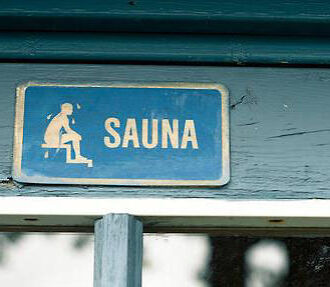What displays a bright, instantaneous light that makes pedestrians and cyclists visible to motorists in the dark, yet requires no batteries or charger?
This describes the pedestrian safety reflector, invented by Arvi Lehti in Pertteli, southwestern Finland in 1963. Reflectors have long been ubiquitous in Finland, across the other Nordic countries, and beyond. People attach them to dangle from a jacket sleeve or hem or from a backpack.
It’s impossible to know how many tens of thousands of lives pedestrian reflectors have saved over the decades, how many collisions have been avoided. According to the Finnish Road Safety Council, a person is normally visible in a car’s headlights at a distance of 50 metres (54 yards), and using a reflector increases visibility to 350 metres (380 yards), giving drivers additional time to react.
Designer and technician Kalervo Elias Suomela is a key figure in the story of how reflectors became popular. Lehti brought him onboard in 1968.
Suomela’s design of the now iconic Snowflake reflector, along with improvements in the manufacturing process, helped catapult pedestrian reflectors to wide commercial success starting in the early 1970s. Suddenly they were not only beneficial, but also much more fun and attractive than the previous rectangular models. The innovative new shape appealed to kids and adults alike.
Call back as soon as you can
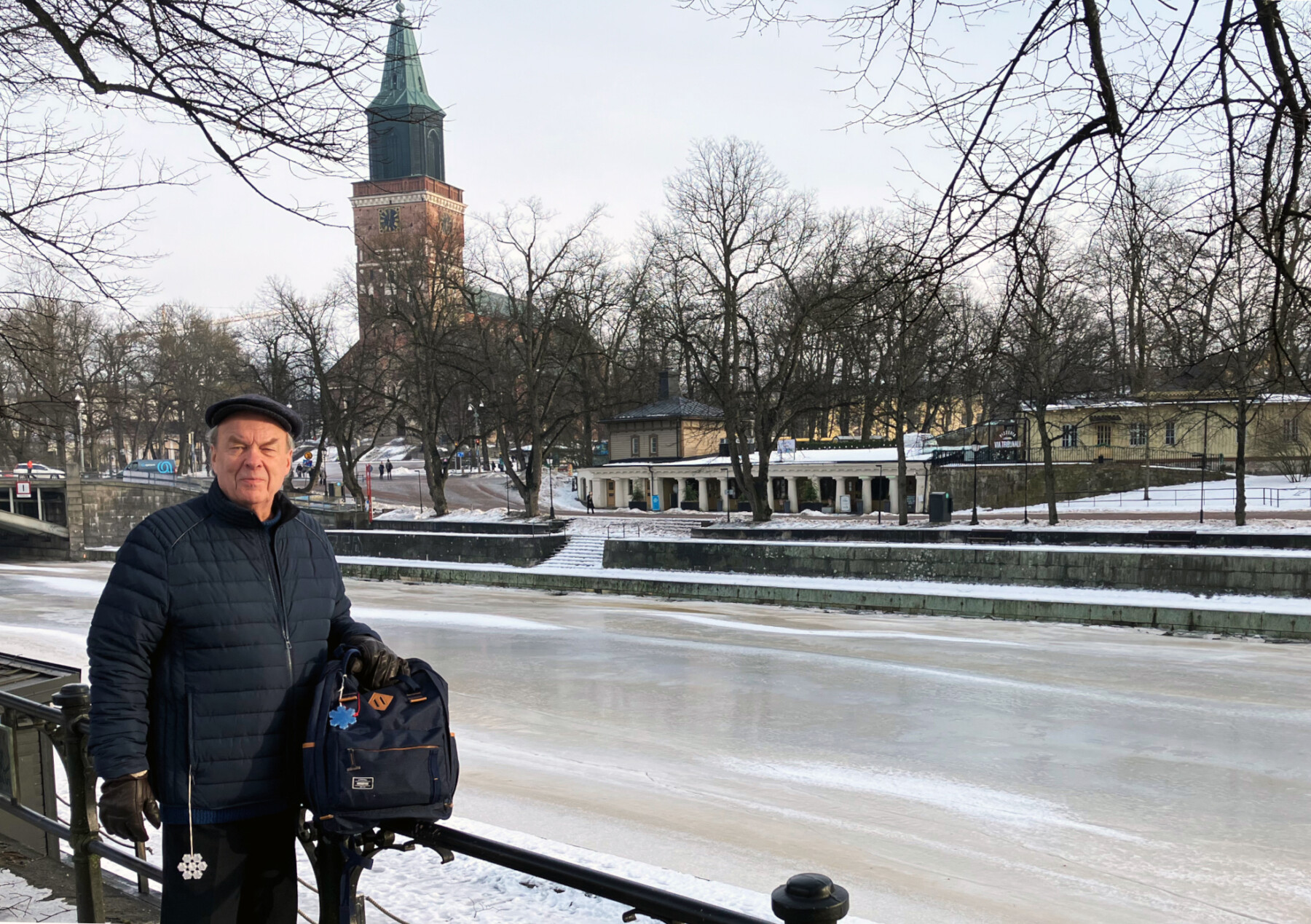
Kalervo Suomela wears one Snowflake reflector on his jacket and one on his backpack. In the background are Turku Cathedral, built in the 1200s, and the ice-covered Aura River.Photo: Peter Marten
The origin story of the Snowflake reflector is wrapped up in Suomela’s career path. Born in 1944 in southwestern Finland, he has lived much of his life in or near the city of Turku. We talked with him there, on a late-winter day when the Aura River was still covered with a thick layer of ice.
He recounts his personal history in an easy-going manner, covering each phase systematically, as you would expect from someone who has spent a lifetime designing plastic components for phones, cars, bicycles, TVs, computers and household appliances and troubleshooting factory machines.
In the late 1960s, he had recently finished a degree in industrial design in Turku. He had held a range of short-term jobs, including fixing refrigeration units at a slaughterhouse and repairing machines at a hospital.
Through mutual acquaintances, he met Lehti, who had not only invented the pedestrian reflector, but also owned Talmu, a small company that used injection moulding to make plastic objects. It was a relatively new field at the time.
“I was living in Turku, and we met in Salo [50 kilometres (30 miles) to the east],” says Suomela. It was early December. “I said, ‘I might be interested in working for you.’ He said, ‘OK, we’ll be in touch after Christmas.’”
“Before I got back to Turku, they had phoned me,” he says. “There were no mobile phones in those days. My mother said, ‘Someone named Arvi called and left a message to call back as soon as you get home.’”
First thing tomorrow
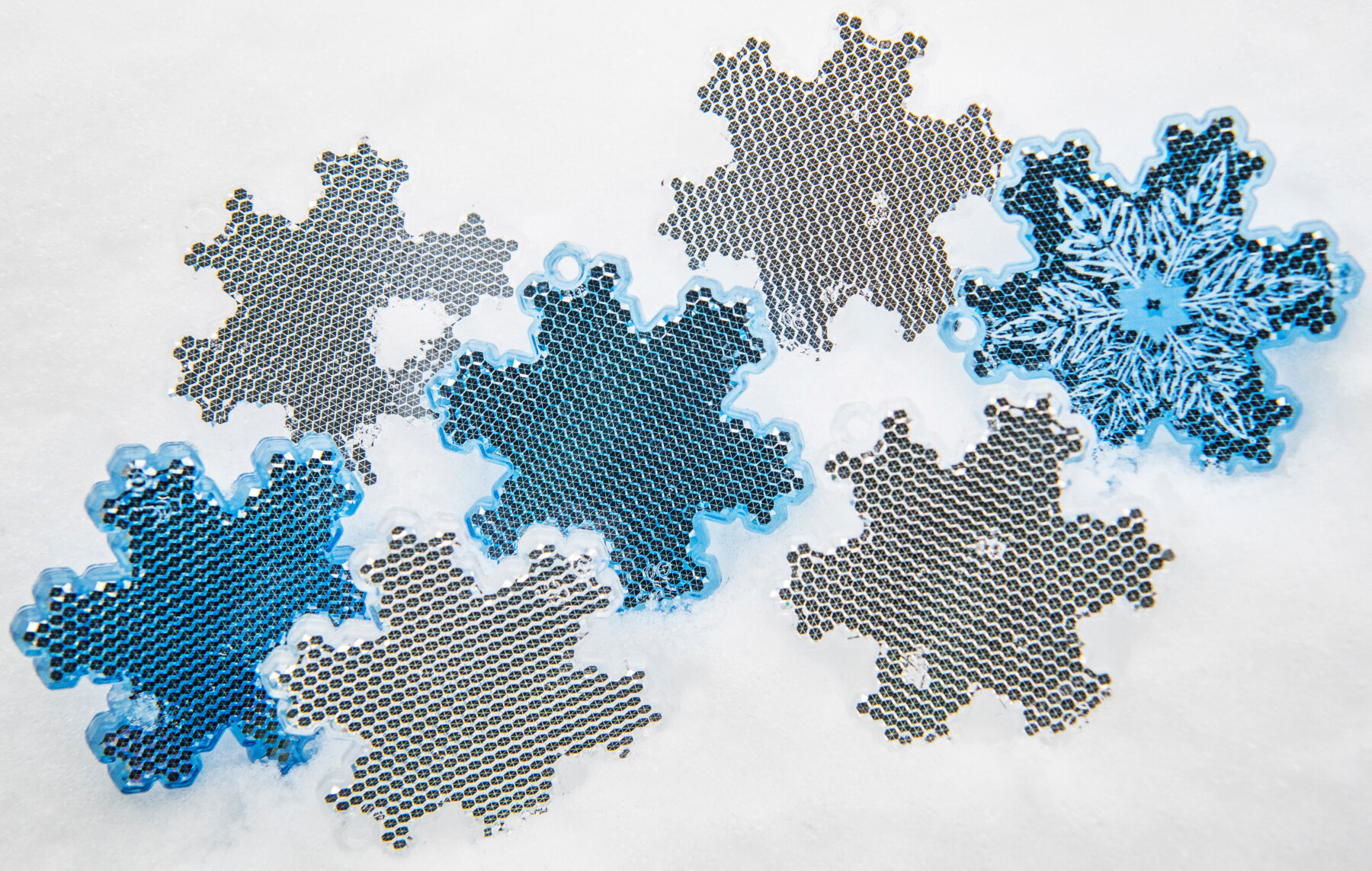
Snowflakes in the snow: Kalervo Suomela’s Snowflake design helped increase people’s use of reflectors and quickly became a classic.Photo: Kirsi-Marja Savola
Lehti sounded frantic on the phone. A large machine was broken and there were orders waiting to be filled. “What are you doing tomorrow?” he asked Suomela.
“I said I didn’t have too many plans,” says Suomela. “Then Arvi said, ‘Could you come out here first thing tomorrow and dismantle this machine and see what’s wrong with it?’”
That’s how Suomela found himself taking a bus in the early morning hours to reach the factory by seven. They hadn’t even agreed on his salary. Later, as payday was approaching, Lehti called him and offered him 4.70 marks per hour. “I said, ‘OK, let’s do that,’ and that was the only salary negotiation of my life,” says Suomela.
Design a couple new ones
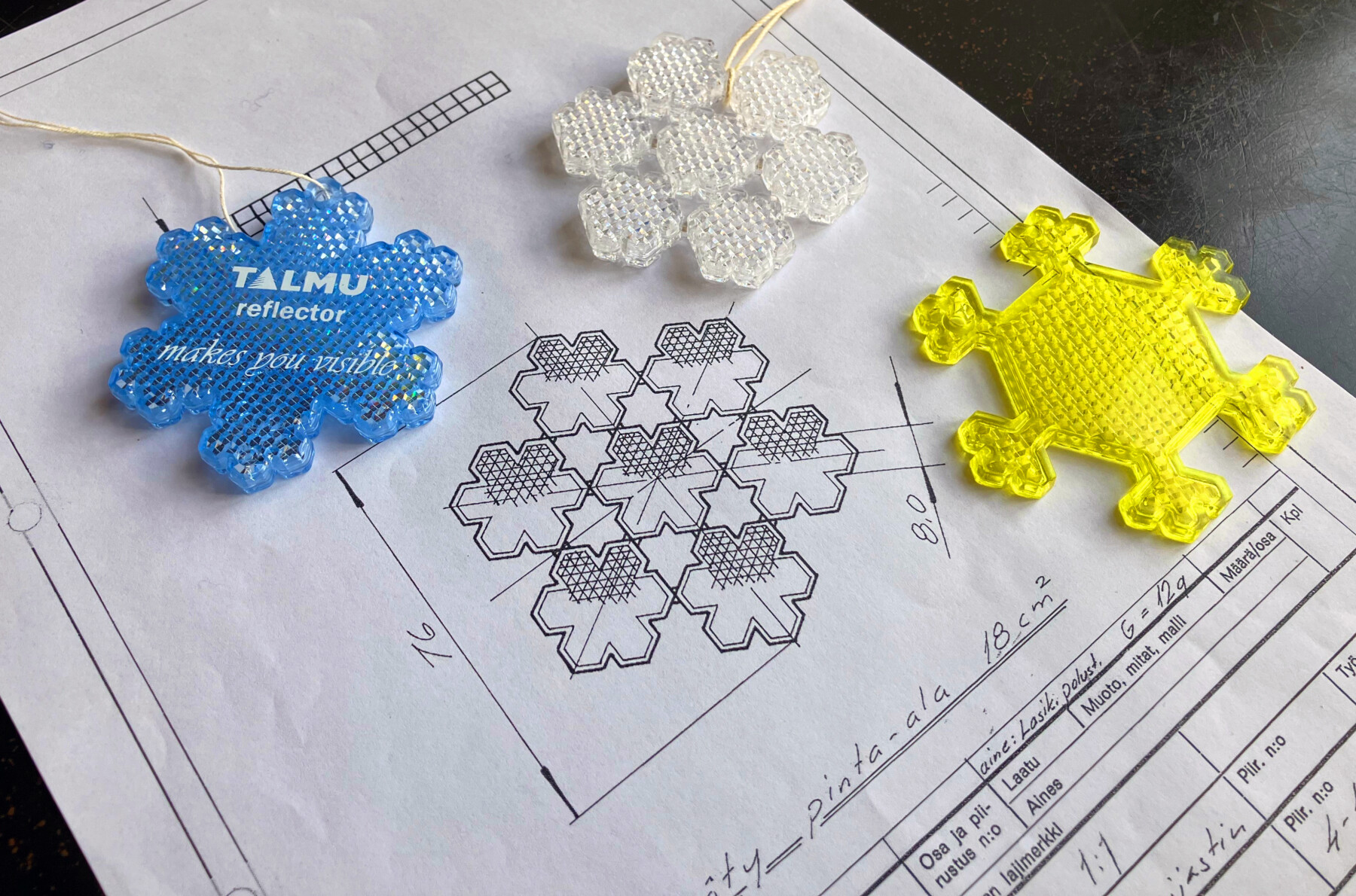
Kalervo Suomela has saved his original blueprint drawings and various early versions of the Snowflake reflector.Photo: Peter Marten
In 1969, he and another young colleague put in long hours getting all the machines shipshape so that the factory could go from one to two or three daily shifts – which had been Suomela’s suggestion. “I was repairing production units and machines day and night,” he says. “I lost seven kilos [15 pounds] that year.”
Meanwhile, one of the factory’s products, rectangular reflectors, was selling fairly well. A request came down from management for him to “design a couple new pedestrian reflectors,” or at least make some more moulds to increase production capacity.
“I figured I wouldn’t do more rectangles, but something else that people would like,” he says. “We were trying to make something that kids would want to use, to get them into good habits early. After all, this thing saves lives.”
Artistic point of view
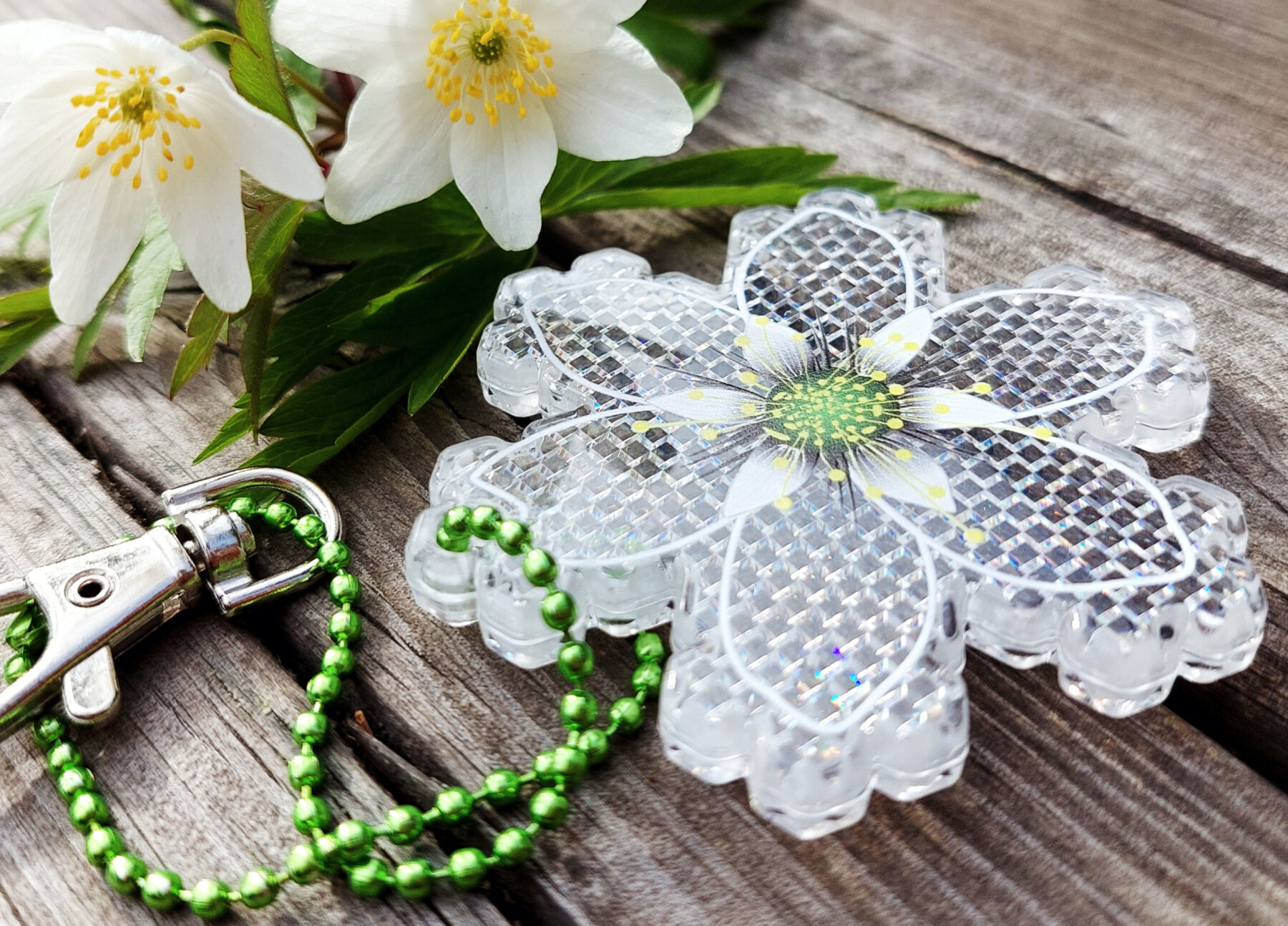
Snowflake reflectors have been decorated with flower-like patterns (seen here) or company logos.Photo: Safety Reflector Finland
“Ever since I was a kid, I’ve been totally crazy about drawing and painting and sculpting,” says Suomela. Even now, ceramics is one of his hobbies, and he is locally famous for constructing giant snow sculptures in his yard.
“When my wife retired, she got interested in genealogy,” he says. What she found out may explain his artistic inclination: on his father’s side, he’s related to the world-famous architect and designer Alvar Aalto (1898–1976) and the prominent sculptor Wäinö Aaltonen (1894–1966), who has a museum named after him in Turku.
When Suomela applied to the polytechnic, he knew he wanted to be designing things. It was a logical extension of his interest in making art.
At the Talmu factory, metal sheets were stored in the yard. The company used them to make the precision moulds it needed to manufacture its plastic products.
In the right conditions, tiny ice crystals would form on the metal. This became Suomela’s inspiration for the Snowflake reflector. He went over for a closer look with a magnifying glass on many different occasions.
“I distinctly remember a couple guys walking past and asking what in the world I was doing,” he says. “I was down on my knees on the snowy ground.”
Still a bestseller

The aesthetic appeal of the Snowflake reflector helped people realise that you can use reflectors to accessorise, as well as to increase your visibility in traffic.Photo: Safety Reflector Finland
The six-pronged shape of the Snowflake reflector is true to life — every snowflake has six points, because of how water crystallises.
It turned out to be an excellent choice in more ways than one. It’s naturally associated with winter, when there are more hours of darkness and a greater need for reflectors. It’s also a “very neutral symbol,” as Suomela points out. “Nobody has anything against it.”
Starting in 1973, the Snowflake reflector took off. “It went just as I thought,” he says. “People liked it, especially kids.”
It remains a bestseller today. Nobody knows the exact amount produced over the years, but it’s no exaggeration to put it in the tens of millions. The Snowflake reflector is even included in the collection of the Design Museum in Helsinki.
In 2017 (the 100th anniversary of Finland’s independence), the Finnish Road Safety Council invited people in Finland to vote on the best traffic safety invention of the century. The winner? You guessed it: the pedestrian safety reflector, again showing that reflectors have achieved lasting popularity.
A busy career

The Finnish Road Safety Council published this photo as part of a campaign to raise awareness about the importance of wearing reflectors.Photo: Risto Vauras/Finnish Road Safety Council
As successful as they were, pedestrian reflectors only accounted for a fraction of the company’s turnover, and of Suomela’s career.
He moved on to many other projects, travelling widely, meeting with customers and partners, devising how to manufacture components for Saab, Volvo, Grundig and others, and ensuring that the designs, machines and moulds for those products functioned. In total, he designed thousands of products.
Then Suomela says something that seems hard to believe: He knew that the Snowflake reflector was a success, but “only when I retired [in the early 2000s] did I begin to realise just how popular it had been.”
What?
“I mean, I would look at the numbers for the traffic product group – OK, this many million units – but I wouldn’t pay terribly much attention to what exact products it included,” he says.
“It only dawned on me later.”
By Peter Marten, May 2024

